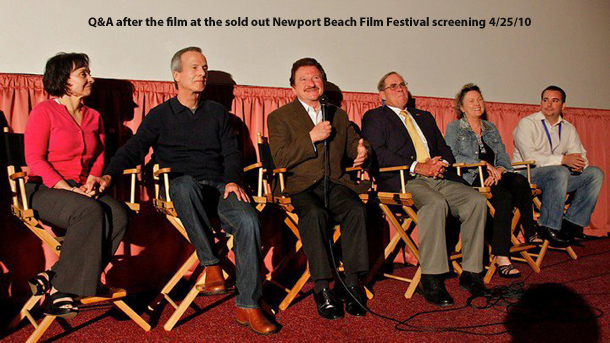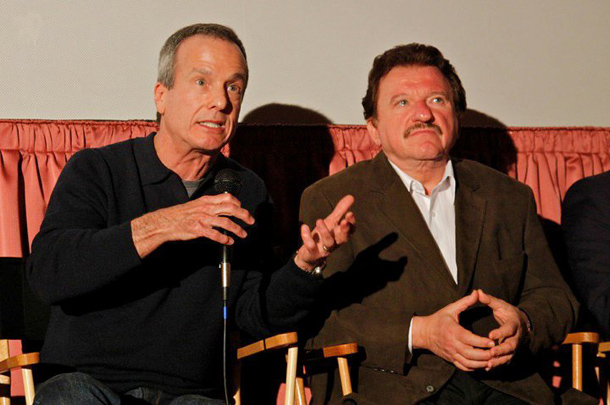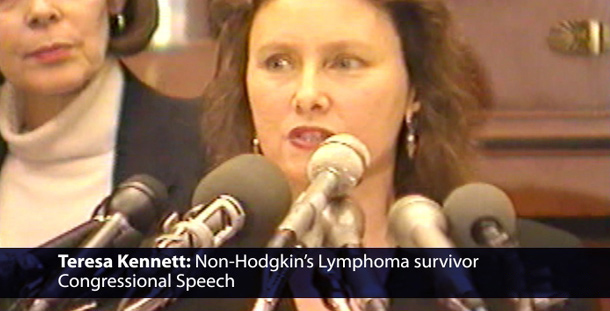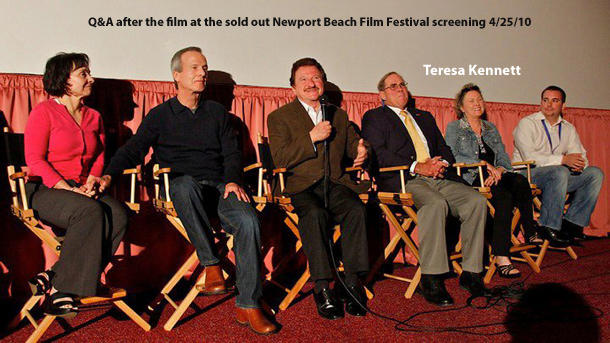To fully utilize this article, click on the blue text to link to the source being discussed.
Mary Jo Siegel was diagnosed with “Non-Hodgkin’s Lymphoma, Stage IV, low grade small cleaved cell” in February of 1991.
She underwent surgery to remove part of her small intestine and mesenteric lymph nodes. By September 1991, she was found to have involvement in her bone marrow. The treatment options given to her was chemotherapy, radiation and a bone marrow transplant.
She refused all of these treatments and decided to undergo Dr. Burzynski’s Antineoplaston therapy on April 3, 1992. By December 1996 all of her cancer was gone. Mary Jo Siegel has been healthy and cancer-free ever since.
Medical Records
#1 Record of Diagnosis into recovery:
UCLA August 1992 Pathology Report & More
St. Johns Medical Center September 1992 Pathology Report
UCLA November 1993 Bone Marrow Report
Houston December 1993 Bone Marrow Pathology
UCLA April 1994 Bone Marrow Report
UCLA July 1994 Bone Marrow Pathology
#2 Direct Third-Party Verification of Recovery:
#3 Additional Third-Party Verification of Recovery:
Thousand Oaks Radiology November 2007
#4 Dr. Burzynski’s records:
Full schedule of tumor measurements
Fighting for her life in Washington DC
Mary Jo and Steve Siegel were two of the leaders in the fight in Washington DC and around the country during Dr. Burzynski’s indictment. Not only were they busy trying to defeat her disease, but they fought equally as hard to be able to have the right to even have access to Antineoplastons. The Siegels turned their home into a centralized home base for the nearly $700,000.00 raised for Burzynsk’s legal defense through Dr. Julian Whitaker’s Newsletter “Health and Healing” in the 1990s.
Given their leadership roles, they were featured on CBS News’ “48 Hours” on April 4, 1996. Watch below to view the segment.
Continuing Their Activism Role
The Siegel’s attended the Newport Beach Film Festival Screening and participated in a Q&A on April 25, 2010.
Twenty years ago, Mary Jo Siegel received the terrible news that she had stage IV low grade non- Hodgkin’s lymphoma. “I was told that I was going to die of the disease. I was stage IV, and the type of lymphoma that I had was always fatal,” she says. Siegel and her husband began researching the disease and traveled all over the country to see seven different lymphoma specialists. Because she lives in California, she chose a doctor at UCLA. After he told her that she would need a bone marrow transplant, Siegel and her husband went to the UCLA medical library to research the procedure (this was before the age of Internet accessibility). “We found out that one person out of ten died from the bone marrow transplant. I also knew from what the doctor was telling me that they would give me as much radiation as people who were within one mile of Hiroshima. I was also told that I would get high dose chemotherapy and that they would bring me as close to death as possible and then rescue me,” she remembers. “They also wanted me to sign a release that was about an inch thick. It said that within five years that there was a fifty percent chance that I would get another cancer and that it would affect my heart, lungs, kidneys – everything. So I would never be the same. But I thought that if this is the only thing that will save my life, then I am going to do it,” she says. “But we decided to search a little bit longer, and I heard about Dr. Burzynski. I was in a cancer support group and someone told me about a doctor in Houston, Texas who was treating cancer and having great success with lymphomas.”
“I met Dr. Burzynski, and I felt like I was in the right place immediately. I just felt so warm and hopeful,” says Siegel. She goes on to say that she did not feel this way about any of the hospitals that she visited. “UCLA, Stanford, USC – I went to all of the great learning and teaching facilities. I had even gone all the way to Dana Farber. So I felt like I knew what was out there and what was being offered.” After learning that Dr. Burzynski’s treatments were non-toxic, Siegel says, “I felt like I’d be a fool not to try this first.” She decided that she could always get the bone marrow transplant if Dr. Burzynski’s treatment failed. “So I started on his treatment against the wishes of my doctor at UCLA. When I told him about Dr. Burzynski, he has some very negative things to say. But I told him that it was my body and that I was going to do what I felt was best. He told me that I had better bring my checkbook because Dr. Burzynski was an entrepreneur and that he had nothing for me. And the truth is that you better have your checkbook at UCLA, Stanford or anywhere you go.”
Siegel admits that the medication was very expensive because Dr. Burzynski manufactured it himself at the time. “When I was being treated, it was about $5000 a month. I had to get a loan on my house. It wasn’t an easy decision because I had three children and certainly didn’t want to leave my family destitute. I didn’t want to leave them at all!” she says. She notes that the treatment was not covered by insurance.
She began Dr. Burzynsky’s Antineoplaston therapy which at the time was available in capsule form or as an infusion that was delivered through a catheter. Siegel was started on the capsules first to see if she would respond favorably. “I stared on the capsules, and I was on them for about a month. But the tumor on my neck was actually getting bigger,” she says. Although Dr. Burzynski explained to her that tumors can actually look bigger when they are breaking down, there was no way to be sure if that was what was happening. Because of that, Siegel chose to have a catheter implanted in her chest so that she could receive infusions of stronger doses of the medication directly into her bloodstream. Siegel notes that the only side effect that she experienced from the treatment was fatigue. “Nobody even knew that I was sick. My hair never fell out, I wasn’t nauseous, I drove all my carpools – I lived a normal life on this treatment. That is why I believe that everyone deserves this treatment if they want it.”
Siegel responded very favorably to the infusions. “I’m telling you, I think that I was on the infusion for less than three months and the tumor on my neck was gone. Gone in three months! One night I got up and my neck was kind of sore, and I looked at it and it was gone,” she remembers.
Because of the type of cancer that Siegel had, the fact that her tumor disappeared did not mean that her cancer was gone. “Because non-Hodgkin’s lymphoma is a blood disease – it’s cancer of the lymph nodes – I had it everywhere. You can’t just remove a tumor surgically because the cancer is all through your body.” Nine months after beginning treatment, she was declared to be in remission. “I stayed on the treatment for another three months just to be sure,” she says. “I had these bone marrow tests which were very painful, and I wanted to have two bone marrow tests clear before I went off the treatment, and that is what I did.” Bone marrow tests detect the presence of cancer, and “clear” tests indicate that no cancer was detected. While being treated by Dr. Burzynski, Siegel continued to see her doctor at UCLA who she describes as a very well known lymphoma specialist. When asked what the doctor said when her tumor disappeared, she answers, “He said it was spontaneous remission. He saw my medical records, and he saw my CT scans because I did all my CT scans at UCLA. He saw them go from cancer everywhere, stage IV, to nothing. Every test that I had since starting Dr. Burzynski’s treatment showed a reduction in my tumor.” When asked why he would not acknowledge that Dr. Burzynski’s treatment was responsible for her remission, she says, “I’ve been asked this question a million times, and I believe that what Dr. Burzynski is doing makes what he is doing wrong. He’s an oncologist. He sees very sick people, and he’s giving them chemotherapy that most of the time doesn’t work.”
She goes on to tell of her experiences while waiting to see the doctor at UCLA. “When I would go there, there would be a waiting room filled with cancer patients, and it was never pleasant. But I would start telling people about Dr. Burzynski – there was always an hour wait by the way. Then, all of sudden they would come out and get me and put me in a room inside and let me wait there,” she says. By putting her in a private room, Siegel was no longer able to tell others about Dr. Burzynski. She still remembers the day that she met a nineteen year old girl who had just had a bone marrow transplant and probably weighed only about ninety pounds. “I couldn’t believe it that my doctor didn’t tell her that there was a doctor doing something else. My heart was breaking for this girl,” she says.
Siegel continued to get CT scans after she went into remission, and her 1995 scan detected enlarged lymph nodes. “My oncologist said that he wanted to give me a round of chemo to knock it out. Of course, I said ‘no way’. I called Dr. B. and he said that he would give me some capsules. He also told me that it could be the flu or something and that we all get enlarged lymph nodes here and there. He did not want me to do a biopsy. Conventional doctors will give you biopsies at the drop of a hat, but Dr. B. said that if you do a biopsy you disturb cells. That makes them move around, and you don’t want that. It just makes sense that cancer cells will travel. He suggested that I take the capsules and then get another CT scan, so that’s what I did.”
During that time, Dr. Burzynski was in the middle of an FDA trial. He was being indicted for distributing non-FDA approved drugs across state lines, and Siegel says that she was considered as an unindicted co-conspirator. She was actively involved in the trial and organized Dr. Burzynski’s patients to protest outside of the trial and also helped raise money for his legal defense. The television news program 48 Hours had heard about Siegel and followed her during the trial. “They interviewed my doctor at UCLA and said, ‘She thinks she’s cured, what do you think?’ My doctor said, ‘I think that she’s a spontaneous remission. She’s not cured.’ He made it sound like after I had the CT scan that it (the cancer) would be there,” Siegel remembers. 48 Hours continued to follow her as she had her CT scan and were with her for about a week. “My CT scan was clear,” she says. “It was so great. It made my doctor at UCLA look foolish because he was so sure that it wasn’t going to be clear.” 48 Hours wanted to interview her doctor after the CT scans results were read, but the doctor refused to be interviewed.
Siegel celebrated when the trial resulted in a hung jury and then again when the doctor was cleared of the charges in a second trial. She continues to travel to Houston to see Dr. Burzynski for her annual checkups. For the last twenty years, she has dedicated a great deal of time and effort to educating people about Dr. Burzynski and the work that he is doing. She notes that he has made many advancements and changes to his treatment methods over the years and that he is currently conducting clinical trials of his drug for patients with brain tumors.
Siegel created and maintains a web site, http://burzynskipatientgroup.org that includes patient success stories and treatment information. When asked why she does this, she answers, “I will be grateful to the day I die. There’s not a day that I don’t thank God for Dr. Burzynski. He saved my life. I was told that I was going to die, and he told me from the very beginning that he didn’t know but that he thought that he could help me.”
She acknowledges that there is a lot of negativity directed towards Dr. Burzynski. “It’s all lies,” she says. “He’s a genius.”



